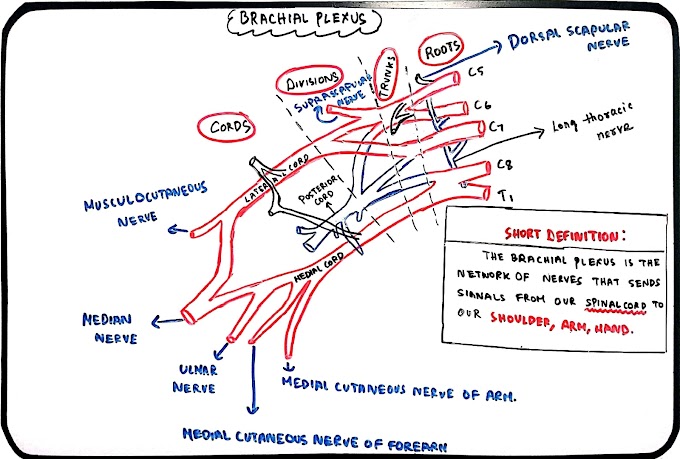BASAL GANGLIA: (kindly refer
internet for pictures)
These are cell bodies within the
white matter of the brain. This name is a misnomer. It should be called basal
nuclei. But, it's misnamed. So, we need to stick to that.
Basal ganglia = putamen + caudate nucleus + globus pallidus + subthalamic nucleus and substantia nigra.
It has got three parts, the head, the body, and the tail. And it's C-shaped.
Putamen:
This is the oval curved structure located laterally.
Globus pallidus:
This is located medial to the putamen. It has
got its external/lateral and internal/medial parts.
• Globus pallidus + putamen = lentiform nucleus or
lenticular nucleus.
• Caudate nucleus + putamen = neostriatum/striatum.
Limbic system: (kindly refer internet for pictures)
Collection of functionally related nuclei and cortical areas.
• Hippocampus = located on the medial aspect of the temporal lobe. Important in the formation of the memory.
• Fornix = C-shaped structure
• Mammillary bodies = present on the inferior side(oval-shaped)
• Amygdala/amygdaloid bodies = walnut-shaped structure which is present at the tail of the caudate nucleus of the basal ganglia but this structure is included in the limbic system.
Ventricles:
They develop from the neural tube of
the embryo and are the remnants of the neural tube. The ventricles contain CSF
which nourishes the brain tissue and removes the waste products from the brain.
The primary function of the CSF is cushioning of the brain and shock absorption.
Lateral ventricles (2) = located laterally and it's C-shaped.
3rd ventricle,
then the 4th ventricle which is present inside the pons.
The lateral ventricle is joined with
the 3rd ventricle by the interventricular foramen. Third ventricle is
joined with the fourth ventricle by the cerebral aqueduct. The cerebral
aqueduct or ITER is present inside the midbrain. The 3rd ventricle is supported by the walls of the
thalamus.









0 Comments